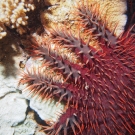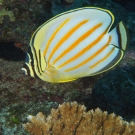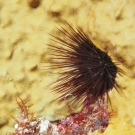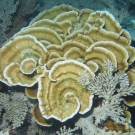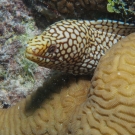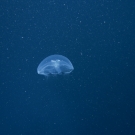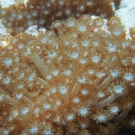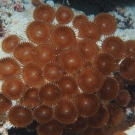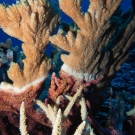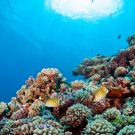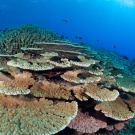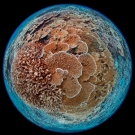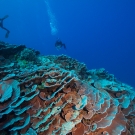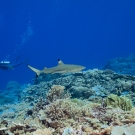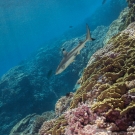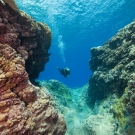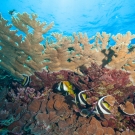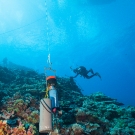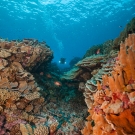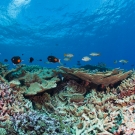Gambier Islands, French Polynesia
The Living Oceans Foundation conducted coral reef research in the Gambier Islands on the Global Reef Expedition, a small group of islands in the most remote part of French Polynesia. Also known as the Mangareva Islands, the archipelago includes five high volcanic islands and 18 smaller islets set within a deep water lagoon and surrounded by a rim of coral. Pearl farming represents a large part of the economy, but tourism and agriculture are becoming increasingly important. The conditions responsible for producing the exquisite color and quality of pearls in Gambier also support some of the most diverse and richest coral reefs in the region. The islands contain more diverse coral habitats than anything we’ve seen to date.
In January and February of 2013, the Global Reef Expedition surveyed low lying atolls in the northwest portion of the Gambier Archipelago, including Tenararo, Tenarunga, Vahanga, Maturei Vavao, and Maria Est. The other two atolls surveyed on the expedition were Mangareva and Temoe. The atolls to the north are all uninhabited but can be temporarily visited by islanders from other atolls that come to harvest coprah and fish, with nearly all of the population of the Gambier Archipelago living on the island of Mangareva.
Our researchers spent twelve days characterizing the complex reef systems of Gambier, a task that at times proved difficult. One genus of coral found abundantly in the area is capable of taking on different shapes, sizes, colors and appearance depending on its habitat and environmental conditions, making it hard to identify at the species level. Even under a microscope, different coral species can look alike, so our scientists often resort to genetic testing to tell species apart from one another. We found dozens of species of Acroporacorals, and a species of table coral that was rare or absent at all of our other research sites in French Polynesia. Interestingly, each lagoonal reef had a different structure and collection of corals.
In addition to identifying corals, we also collected sediment samples to better understand how physical forces such as wind, waves and currents affect the distribution of sediment in this region. We also surveyed fish on the reef to provide a full picture of the aquatic ecosystem.
Our mission also included a groundtruthing team to collect the data necessary to create detailed habitat maps of the region, as well as a ciguatera team to study the drivers of ciguatera poisoning. Researchers from Institute Louise Malardé and IRD joined us to follow up on the monitoring sites they established in 2012 and to study the algae that the illness-inducing Gambierdiscus dinoflagellates occur on. Together we established six new coral reef research sites and conducted a thorough study–the first comprehensive study of Gambierdiscus ever completed in the Gambiers.
In total, researchers conducted surveys at 54 dive sites, completing a total of 315 benthic habitat surveys and 546 fish surveys in the Gambier Archipelago. Overall, the Gambier Archipelago had the highest overall percent live coral cover of all of the archipelagoes we surveyed in French Polynesia. The coral communities of the Gambier Archipelago reached nearly 70% live coral cover in some locations. For the South Pacific, these numbers are unprecedented and were the highest seen in all of French Polynesia. The reefs of the Gambier Archipelago also had some of the highest richness, density and biomass of fish in French Polynesia. Commercially important fish were diverse and plentiful, and reef health indicators and ecologically important fish species were well represented.
